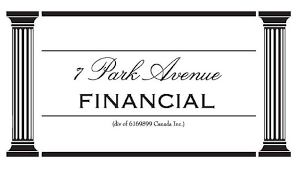|
Eliminate Cash Flow Problems with Accounts Receivable Factoring
Transform Your Invoices into Instant Working Capital
YOU WANT A RECEIVABLES FINANCING SOLUTION & INFO ON THE TRUE COST OF FACTORING!
ACCOUNTS RECEIVABLE FACTORING SOLUTIONS :
The Canadian SME's Guide to Understanding Factoring and Its Costs
UPDATED 07/18/2025
You've arrived at the right address! Welcome to 7 Park Avenue Financial
Financing & Cash flow are the biggest issues facing business today
ARE YOU UNAWARE OR DISSATISFIED WITH YOUR CURRENT BUSINESS FINANCING OPTIONS?
CONTACT US
CALL NOW - DIRECT LINE - 416 319 5769 - Let's talk or arrange a meeting to discuss your needs
EMAIL - sprokop@7parkavenuefinancial.com

Receivables Financing and the Cost of Factoring: Understanding Your Options
Receivables Financing and the Cost of Factoring
Receivables financing and the cost of factoring are pivotal in the realm of business finance, offering a lifeline to companies seeking immediate cash flow.
This financial strategy, involving the sale of receivables to a third party, is often clouded by misconceptions about its true cost and operational nuances.
Despite its growing popularity, understanding the real impact and effective utilization of factoring remains a complex yet crucial aspect for Canadian businesses in managing their working capital and fostering growth.
For a comprehensive guide on finance factoring and receivable financing in Canada, visit 7 Park Avenue Financial.
Stop Waiting for Payment - Get Cash Now
Your outstanding invoices are draining your cash flow.
While customers take their time paying, you're struggling to meet payroll, pay suppliers, and seize growth opportunities.
Let the 7 Park Avenue Financial team show you how factoring accounts receivable financing eliminates this waiting game by converting your invoices into immediate cash, typically within 24-48 hours, so you can focus on running your business instead of chasing payments.
Receivables financing transforms the way businesses manage cash flow, providing a strategic solution to immediate working capital needs through the effective leveraging of outstanding invoices.
How can businesses navigate the intricacies of receivables financing to turn their outstanding invoices into a tool for sustainable growth and financial stability?
While often criticized for its perceived high costs, receivables financing is a misunderstood tool that, when strategically used, can propel a business to financial success far outweighing its expenses.
The Key Factoring A/R Financing Question
How much is it? No, we aren't in line at a department store; we're sitting with our clients who are always asking what the true cost of factoring receivables is and if a line of credit/receivables financing facility is their real solution for working capital problems.
They ask other questions also, such as how the facility works and what is the best type of facility for the Canadian business marketplace, so we'll cover those also.
The True Cost of Factoring
The biggest stigma around the topic is the true cost, and we use the word "true cost" because many Canadian business owners and financial managers simply don't understand the components of that true cost, and more so, how these costs can be significantly offset and reduced. For a deeper understanding of invoice factoring in Canada view this article.
One of the misconceptions clients have around the pricing of receivable factoring is related to the fact that you receive (depending on who you are dealing with) 80–90% of your invoice amount in a receivables financing scenario.
One thing that constantly disturbs us is the terminology mumbo jumbo that many factoring companies use when they are offering you pricing on your facility.
We don't think there is more of a misunderstanding of business financing in Canada when it comes to invoice factoring, even though receivables financing is growing in popularity and traction every day.
Additional Factors behind Factoring Costs
We'll point out that coming up the rear fast and furious behind true cost are the issues of how the facility works and what type of facility is the best one in Canada—as there are several types.
Defining Receivable Factoring
To properly address our issue let's quickly define our subject—factoring (also called receivable discounting and invoice financing) is simply the sale of your receivables to a third-party firm, that firm providing you with immediate (and we mean same day!) cash as the factoring company collects cash to finance your business.
Calculating the True Cost of Invoice Factoring
You can quickly and easily focus on the true invoice factoring cost by simply keeping in mind three things that you need to know around factoring fees / invoice discounting —they are:
-
The percentage that you are advanced on your invoice (refer to our previous comments) on the factoring process
-
The discount rate charged on the advance in the financial transaction
-
The length of time that you typically collect your receivables
Understanding Days Sales Outstanding (DSO)
Most business owners are not readily familiar with their DSO, their "days sales outstanding."
Therefore, if you know your collection period and get an honest, clear answer on our three points, you can easily determine the cost of factoring.
Factoring Rates in Canada
In Canada, that rate is typically going to work out to be in the 1–1.5% per month range depending on the lender's perception of the size and quality of your accounts receivable portfolio.
Assessing the Value of Factoring
Is that expensive financing? You tell us, because if you take into account the receivables financing facility provides you with unlimited cash flow to generate sales and profits, and that you can use the cash to offset financing costs, well . . . we don't think so. Costs can be offset by using the funds to take supplier payment discounts and purchase in larger volumes and better prices regarding your inventory needs, etc.
Key Takeaways
- Immediate cash conversion - Transform invoices into working capital within 24-48 hours
- Credit risk transfer - Factor assumes collection responsibility and often provides credit protection
- Scalable financing - Funding grows automatically with your sales volume
- No debt accumulation - Factoring is asset-based, not debt-based financing
- Customer credit focus - Approval depends on customer creditworthiness, not your credit score
- Collection outsourcing - Professional collection services improve payment rates
- Flexible terms - Choose which invoices to factor based on cash flow needs
- Rapid approval - Much faster than traditional bank loan approval processes
Case Study
Company: Canadian Manufacturer
Challenge: 60-day payment terms creating cash flow gaps
Solution: Confidential Factoring accounts receivable financing
Results:
- Immediate access to 85% of invoice value
- Reduced collection time from 60 to 30 days
- 25% increase in working capital
- Eliminated need for expensive bridge loans
- Improved supplier relationships through early payments
Conclusion
Call 7 Park Avenue Financial, a trusted, credible, and experienced Canadian business financing advisor who can assist you with your business cash flow needs when it comes to receivable financing and your business financing needs.
FAQ
What is receivables financing and how does it benefit a business?
Receivables financing via factoring services involves selling your unpaid invoices to a third party for immediate cash. This boosts working capital, improves cash flow, and helps manage financial gaps due to slow-paying customers.
What are the typical costs associated with an invoice factoring company?
Costs usually include a percentage factoring fee based on the invoice value, known as the discount rate, and an advance rate, which is the percentage of the invoice paid upfront. These fees can vary based on factors like the volume of receivables and the client's creditworthiness.
How quickly can a business access funds through receivables financing?
Funds are typically available within 24 hours of submitting invoices, providing businesses with rapid access to capital.
Is receivables financing suitable for all businesses?
It's particularly beneficial for businesses with long invoice payment cycles or those needing quick cash flow. However, it's essential to consider the costs and terms to ensure it aligns with your financial strategy.
What's the difference between recourse and non-recourse factoring?
In recourse factoring, the business must buy back any unpaid invoices, while in non-recourse factoring, the factor assumes the risk of non-payment, typically at higher invoice factoring rates.
Can startups use receivables financing?
Yes, startups can leverage receivables financing, especially if they have invoices from creditworthy clients, as it provides quick access to working capital until the customer pays, without focusing on established credit history.
Does receivables financing affect a company's debt ratios?
Generally, it does not increase a company's debt ratio since it's not a loan but the sale of an asset (invoices).
Are there industries that particularly benefit from factoring?
Industries with long payment cycles like manufacturing, wholesale, and staffing services greatly benefit from factoring to maintain consistent cash flow.
How does factoring impact relationships with clients?
Factoring can be discreet, and if managed properly, it does not negatively impact client relationships. Communication is key to ensuring clients understand the process.
Can a business factor only a portion of its invoices with an accounts receivable factoring company?
Yes, businesses can choose which invoices to factor in, allowing for flexibility in managing cash flow and financing costs.
What role does a business's credit score play in receivables financing?
In receivables financing via invoice factoring companies, the creditworthiness of the company's clients is more critical than the business's credit score, as the factor is more concerned with the likelihood of invoice payment.
Are there any hidden costs in factoring agreements?
Potential hidden costs from a factoring company can include service fees, termination fees, or penalties for minimums. It's vital to thoroughly review the factoring agreement to understand all potential charges.
How does receivables financing compare to traditional bank loans?
Unlike traditional loans, receivables financing is quicker to set up and doesn't add debt to the balance sheet. However, it may be more expensive than traditional financing options depending on the terms and fees.
Statistics on Factoring Accounts Receivable Financing
- 73% of businesses experience cash flow challenges due to slow-paying customers
- Factoring can improve cash flow by 15-30% within the first quarter
- 89% of businesses using factoring report improved supplier relationships
- The average business waits 36 days for invoice payment
- Factoring approval rates are 85% higher than traditional bank loans
- 67% of factoring clients report reduced administrative burden
Citations
- Canadian Association of Commercial Finance Companies. "2024 Commercial Finance Industry Report." CACFC Publications, 2024. https://www.cacfc.ca
- Statistics Canada. "Business Credit Conditions Survey: Fourth Quarter 2023." Government of Canada, 2024. https://www.statcan.gc.ca
- International Factoring Association. "Global Factoring Market Analysis and Trends." IFA Research, 2024. https://www.factoring.org
- Bank of Canada. "Business Outlook Survey: Winter 2024." Bank of Canada Publications, 2024. https://www.bankofcanada.ca
- Fraser Institute. "Small Business Tax and Regulatory Burden in Canada." Fraser Institute Press, 2024. https://www.fraserinstitute.org
- 7 Park Avenue Financial ."Finance Factoring Receivable Financing Canada". https://www.7parkavenuefinancial.com/finance-factoring-receivable-financing-canada.html

' Canadian Business Financing With The Intelligent Use Of Experience '
STAN PROKOP
7 Park Avenue Financial/Copyright/2025

ABOUT THE AUTHOR: Stan Prokop is the founder of 7 Park Avenue Financial and a recognized expert on Canadian Business Financing. Since 2004 Stan has helped hundreds of small, medium and large organizations achieve the financing they need to survive and grow. He has decades of credit and lending experience working for firms such as Hewlett Packard / Cable & Wireless / Ashland Oil
|